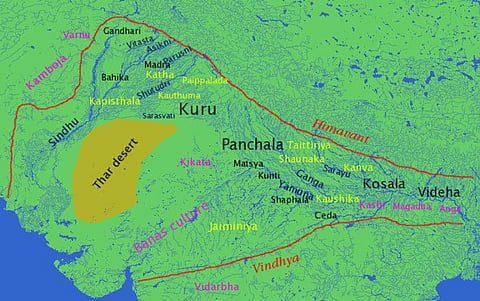
- Home
- न्यूजग्राम
- NewsGram USA
- India
- World
- Politics
- Entertainment
- Culture
- Lifestyle
- Economy
- Sports
- Sp. Coverage
- Misc.
- NewsGram Exclusive
- Jobs / Internships

Also known as the 'heroic age', Vedic Age was the one which laid down the basic foundations of Indian civilization.
A period between 1500 BCE to 500 BCE, this is when early Hinduism emerged and so did the caste system. Here are 10 facts you probably didn't know about the Vedic India map.
The Pandavas were from Kuru kingdom, whereas Draupadi was from Panchala. The antagonist of the Epic, Shakuni, was from the kingdom of Gandhar.
The Rigveda, Mantra texts, Samhita texts, and important Brahmana literature were composed around this time.
Most of Indus Valley Civilization was situated in present-day Pakistan. However, the next civilization which came i.e. Vedic civilization was situated around the Gangetic plains.
Mahaveer Swami was part of post-Vedic movements against orthodoxy. Pexels
The Himalayas have played a major role in India since forever, same was with Vedic India. However, they were known as Himavani then.
Not until 1947 did India had it's clearly defined borders. It all was based on which ruler is in power.
Under the rule of King Parikshit, the realm turned towards the Iron Age. Parikshit was the grandson of Arjuna, the protagonist of Mahabharata.
Unlike, the medieval caste system, ancient India caste system at the time when it was originated wasn't based on birth. It was based on the capability of a person.
The Vedas were composed in the Vedic period. Wikimedia Commons
Gandhar, Madra, Sindhu etc, in present-day Pakistan, are archaeological sites where Harappan artifacts have been excavated.
Mahajanapada and Shramana were movements which challenged Vedic orthodoxy.
Since Indo-Aryans were the ones who composed the Vedas.
